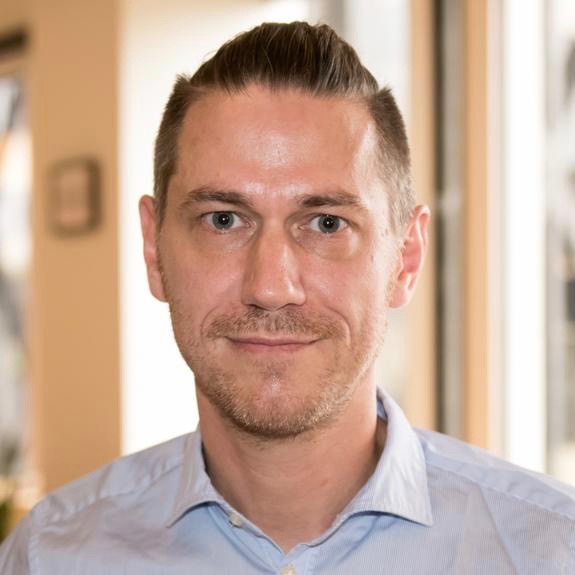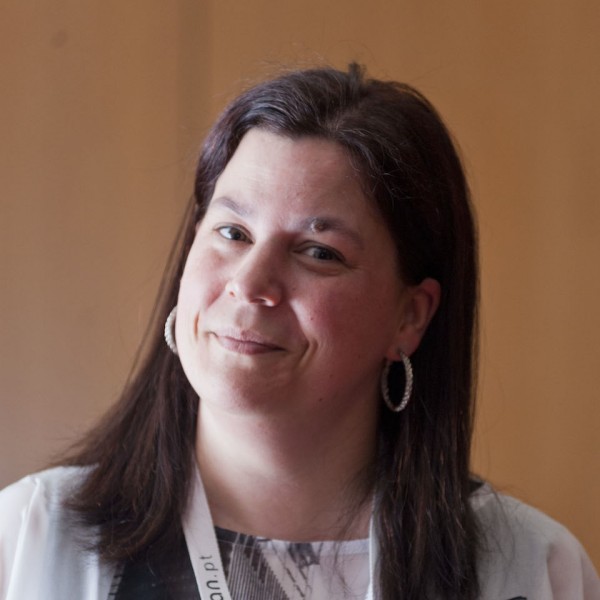Stefan Behrens is in the middle of all the digital issues. As CEO of GYANT, Stefan leads a team of 60+ people who are distributed around the world. During the pandemic, they shifted from headquarters in San Francisco and Lisbon to all over the world.
Prepared for WFH
Stefan said one of the best things they did to prepare for the pandemic was having a work-from-home Wednesday already in place. It was a way for many of the engineers to have a quiet place to focus on work and backlog where they wouldn’t be interrupted as much.
Collaboration in digital platforms
Stefan said there’s a lot of room for improvement for how digital teams collaborate. For example, there seem like a lot more meetings on the calendar now, but that’s often because even the impromptu ones have to be scheduled.
Meetings themselves need a lot more thought and planning. “I think it’s just being a lot more thoughtful around an architecture for meetings on a weekly or monthly basis.”
Teams need agreements on establishing expected response times for their collaboration so that everyone is on the same page. The platforms you use should also make it easy to be very clear when work is assigned to someone and what actions they need to take.
Better collaboration requires more trust, empowerment, and transparency.
Building a digital culture
It’s hard to change culture if it developed by accident. Most culture in startups is accidental. It just emergers out of being in the same room together. So, as you grow larger, it becomes nearly impossible to “protect” something that you can’t define.
After several months of the pandemic, Stefan thinks that when his team does get a chance to all gather together as a team, he’ll focus most of the time just on relating to each other as humans. Until then, they are experimenting with different remote team building activities.
“A joint dinner in person is probably worth five of these online team building activities, but at the same time you have to do something. And anything is better than nothing.”
Hiring developed
Finally, Stefan and I talked about how many mature digital workplaces require hiring people in the middle of their career who are comfortable with their contributions and confident of their skills. Stefan is worried about people just starting their careers who are not able to see what happens behind the scenes. He knows they will have to start hiring these people eventually, but is still thinking about the best way to care for them.
Links
Welcome back to The Digital Workplace podcast. Today, our guest is Stefan Behrens. He is the Co-Founder and CEO of GYANT. Hey, Stefan, how are you today?
Hi, Neil. Pleasure to be on.
It is a pleasure to have you here today. We are very excited to hear what you have to say. You have an interesting story to give, with us. But I want to start off making sure that you are a real-life human being. Your task today, Stefan is, to say something nice about somebody you work with?
Yeah. I think I would have to give those props to my girlfriend, Monica, who has supported me through all these changes we did with the company. You couldn’t be a successful entrepreneur if you didn’t have support on the home front in making sure that you have balance in your life.
Absolutely. I think that’s so important. No one just goes up and creates a company on their own. There’s always a lot of support around them. So, that’s a great answer. Very good. All right, you’re approved of your humanity. So, why don’t you tell us a little bit about GYANT, and how did it get started? This is not your first venture. So, give us a little bit of your history.
Yeah, so this is actually my third company. The first two I started were on the consumer side. So, I originally started or scaled a video games company in Europe, and then worked on a direct-to-consumer brand that was scaled and sold successfully after that. GYANT was really our attempt to make a little dent in the universe, on making a significant problem that exists around the world better, which is access to healthcare. It’s just way too complicated. The user experience for patient’s is typically terrible and the experience for caregivers and providers who work in the system also suffer from a lot of administrative burden and paperwork. So, we felt that had to change, hence we started GYANT.
Cool. And specifically, what part of the healthcare system are you working on?
So, we are providing a digital assistant that patients can use and caregivers can use to automate a lot of the mundane tasks that happen in and around healthcare like getting access to care. So, think of this as a friend that you can chat with that helps you identify if you have a fever, or if your daughter is sick, what to do about it, where to go and find the best place of care, or get access to the right services. Mental health is a big issue these days, for example. So, just making it easier to navigate a complex healthcare system and get access to the care that people need.
That sounds fantastic. Tell us a little bit about your team, and specifically walk us through the transition everyone went through back. You know, March of 2020, how big was your team about that time? And where are you now?
So, in March, we were around 20 people split across two locations, one in the Bay Area and one in Europe, in Portugal. Long story as to how we got there, but essentially the team was split, probably two-third US and one-third Europe. When we made the transition to full remote work like everyone else did in March, we have since grown the team to about 60 people. So, there are more people in the company now that I have never met in person than people that I have met in person when we started this journey.
Wow. That’s amazing. Walk us through the idea about what you were ready for, like looking back, no one was completely ready for what happened with this big switch. But in which ways were you ready for completely distributed work and what ways did you have to get used to that and make some quick changes?
Yeah, I think the fact that we had a partially distributed team in two locations before already prepared us to some extent. We had the right infrastructure and also the right internal process to have video meetings and asynchronous communication. We lived on Slack and email at the time. So, a lot of the tools that we later used to shift all of our work to remote-first were already in place. And we had previously instituted a ‘work from home Wednesday’, which was actually super popular with the team and incredibly productive because it was a day where you had less interruptions and less meetings, and you could actually get some deep work done, especially on the engineering and product side. You can only be so effective if you get interrupted every 15 or 20 minutes. So, that was already in place. In essence, we just expanded that to all days of the week, and then put some structure around, how do we make sure that when everyone is not in the same place, these casual alignment discussions and casual ‘Can you help me with this? Can you take a look at that?’ took place. We’d find ways of scaling that to a remote environment where you have to put a little bit more structure around these types of discussions or workplace conversations for alignment.
Yeah. I think that’s a big thing that we hear from a lot of people, like you said you need more structure in a distributed workforce. You can’t just rely on those casual conversations to bring people in alignment and to make sure things are there. What types of structures have you found to be effective, both with the tools you use, the way you use those tools, the way you train people? What types of things have you found to be effective?
Yeah. So, we’ve been a lot more deliberate around meeting structure. The thing about now, and it’s not a surprise, is that there’s too many meetings. I guess these meetings were happening before but they were just not on the calendar. We had people bumping into one another, or coming into the office and saying, ‘hey, do you have five minutes to talk about this, talk about that’, or you just grab coffee and talk about work in some ways. So, now everything has to be on the calendar because you can’t rely on this happening casually. Or you can get some people into a Zoom or Hangout ad hoc, but it’s more challenging when people are not in the same room and you have to wait. So, I think it’s just being a lot more thoughtful around an architecture for meetings on a weekly or monthly basis.
So, we’ve instituted a lot of additional regular meetings and all-hands sessions and team sessions and cross-team alignment sessions and things like that to make sure that the communication flows, which previously happened naturally. But as the organization grew and you were in this remote environment, you had to put structure around it.
And then the second piece was probably around creating some rules and how to use certain parts of the software, right? So, we discussed, for example, response times and SLAs around different channels of communication. Everyone now gets inundated in Slack notifications and emails, and then there are text messages. You have three or four different inboxes to check. Jira. Right? So, it’s just too confusing.
And if you don’t establish clear expectations around the urgency and the timeliness of certain responses, people get frustrated, or people are blocked and can’t proceed. So, we established that in what times you can expect a response depending on the kind of channel. And some rules of how you address people in conversations on Slack or on email to make sure it’s very clear who has work to do and who has the next step and what the expectations for turnaround time are.
Can you give us some examples? Specifically, say you are in Slack and email. Internally, why would you use one versus the other? Do you use Slack more for semi-synchronous discussions and emails for things that can take a little bit longer? What was the reasoning between using both those platforms?
Yeah. Slack is a little bit more for, let’s say, the casual and ad hoc, and also documenting conversations that are happening maybe between two members of a product or project team where the rest of the team should have visibility of those conversations, but doesn’t necessarily need to be involved directly. That’s where Slack, I think, excels. But we also interface with customers, and they may not be on Slack. So, there’s still important conversations or project work that comes in through email.
And sometimes it just has a slightly different weight to it. If I want to address the company, for example, I probably won’t send a Slack message to the team, because that just gets crowded out by the other 85 notifications they’re going to have in the morning when they open up Slack. So, I think an email will stand out more. And then there’s no immediate response expectation either, right?
So, for me, email is a little bit of a slower medium. If you respond to it in four to eight hours, or a day, that’s fine. On Slack, I think the expectation is that you respond more quickly. And if I need to get someone’s attention or need help right away, that’s when it’s the right time to pick up the phone and text someone or call them.
Yeah. I think establishing those is something that we definitely encourage leaders of teams to do with these kinds of working team agreements or something like that. But that’s something that doesn’t happen a lot. Do you feel those challenges and the reasons you went to these agreements to say, ‘Yes, it’s going to be this amount of time for these SLAs’ or whatever, did those come from within the team or was it just a boiled up, ‘Hey, we need something like this’ or did it come from your position as a CEO of saying, ‘Hey, we got to bring some more structure in this’ or where did that urge for more structure come from?
No, I think it was a discussion I had with my team and something that came up from the team. Again, this problem of having too many inboxes that you need to check and unclear expectations of what to do first and how to respond. So, some people would Slack someone and expect an immediate response because they may be blocked on something. But that person is in a meeting or in a call with a customer so they can’t immediately respond. So, how do you establish some guidelines around situations like that where expectations aren’t clear.
Another element here is just very clearly pointing out whenever you expect someone else to do something with all these notifications, including email, Jira, and Slack, it’s so easy to get hopped from notification to notification and miss work, where you have to do some work, and then the process is blocked or something gets delayed. So, just being very clear about who needs to do what, and making sure that that’s explicitly stated in the communication is a big factor.
I think that’s a great thing and what a lot of collaboration tools are missing out, I would say. There are very few tools out there that have a very tight connection between task management and collaboration. So, even like you’re talking about meetings, meetings in structure. But it doesn’t mean every time you have a meeting, there’s something for somebody to do. And so, to have some kind of structure in there to be able to assign those tasks to yourself or to a teammate or straight from something else, I think that’s something that’s missing. You can create those obviously with some tools and integrations but otherwise it’s a challenge.
Yeah. And what we’ve also instituted, what I’ve taken into my leadership team meeting, and I think that’s worked really well, is just being clear. When you have an agenda item, is this something that’s just for information of the group and you don’t expect anyone to take action, or is this something where you want people to weigh in, but it’s your decision ultimately, but you want to get people’s opinion, or consult them as part of the process. Or you bring something up that you feel is not your decision or not your problem to solve and you need help, and somebody else needs to take ownership. Right? So, just being very clear about whose issue it is and what the next steps are and who needs to take action. That’s really helpful.
There’s so much communication that I think is mostly in the FYI category, to keep people aligned, keep people informed, and just stating that clearly helps a lot because then you can read it, parse it, maybe do it later, but you know that there’s no action for you involved. It’s always difficult when you have a long email and then at the bottom, it says, ‘Well, somebody needs to do something’, and it’s not clearly spelled out. It’s so easy to miss.
Stefan, this leads me to one of my core questions I have right now, which is that the level of digital maturity it takes to get to what you’re describing I feel is a big leap from where most people were in 2019. In terms of being able to say, ‘Okay, I have a meeting. I have an agenda item, I do. This is just FYI. So, I’m going to document it as that’, that takes a lot of mental power and a lot of maturity and exposure and experience to get to that point. Looking forward, where do you feel like this is going? I’ll give you a couple options. One, this is just the new norm, and if you’re going to work and you’re going to be effective, you have to build up to this. Or two, this is going to create this huge divide between highly productive digital workplaces and those that are just struggling to get by. Or three, it’s just too hard and we’re going to try it for a while, and then everyone’s going to fail at it. Where do you see things going?
I think it’s going to turn into this digital divide. On one hand, I think people are realizing that some of this is necessary to be effective and we’ll adopt it. But I think we’ll see a bigger divide of organizations that are remote ready, or digital-first ready, and others that are struggling with that transition.
Another thing that’s important, and I think that we haven’t talked about is, there’s a big cultural foundation you need to create in order to have an effective remote team. Because there’s no immediate way to, you know, in old school management terms, there’s no immediate way to supervise, right? Everyone is at home. They could be doing whatever. And so, it really needs a culture where you have trust, but also empowerment and enabling people with the right information, background, and transparency on the context so that they can be effective and take decisions independently.
When we started the company, things were moving very quickly and we had six or seven people in the same office barely three feet apart from one another. It’s a very different environment if you have that, where you can be involved in every single conversation and every single decision, to where we are now, where essentially everyone has to trust their team members that they’re going to be doing the right things and make sure that people are aligned and have the right context to take good decisions independently. I think that’s a big aspect and organizations that don’t have that same level of trust or empowerment or transparency so that their team members can take the right decisions independently, are going to struggle to be effective in this environment.
That’s a great point. Let’s dive deeper into this idea of culture. Obviously, culture is made up of lots of things and a lot of what we’ve already been talking about there too. You said even earlier, before the pandemic, you had teams in Portugal and in the Bay Area. Was it difficult to allow people to have their own culture, their own team culture, their own maybe location culture, but then also an overarching team culture? How have you navigated that? That’s just the big question.
Yeah, I think, you know, whenever you have a large enough organization, you will have some level of local flavor, I would say, in individuals. Because so much of it is shaped by the people who lead these parts of the organization. However, I think it’s important that you have a foundation that is recognized across the company and across teams. And for us, we were very deliberate in setting out the kind of culture we wanted to build at GYANT from the very start. And I think that’s a reflection of having built organizations before from the bottom up. If you’re not deliberate about setting out the culture and being articulate and transparent about what you’re trying to do and why, you end up building a culture. But if you’re not clear about what it is that you’re building and it happens by accident, then once it’s there, it’s very hard to change.
So, at GYANT, we wanted to be very deliberate. When we were a team of six people, we spent multiple off-sites discussing and shaping what kind of behaviors and what kind of values we wanted to coalesce the company and the team around, and have been repeating those since then. They’re part of our hiring process. They’re part of our weekly and monthly cadence and interactions as a team. So, it’s a very important aspect, I think that we started early on, to set the foundation for a strong culture that allows this sort of independence now that we’re benefiting from, in a remote-first environment.
You’ve been using the word deliberate a lot. Let’s say, we’re a year out into the future or however long it takes to get your entire team in one place. Everything is safe to travel. You’ve booked the spot. You’re all there together. What is the number one and number two things on your agenda for that time that you get to spend together? It’s going to be limited. There’s only a certain amount of time you get. What do you really want to get out of that?
Yeah. I think a lot of what you would normally do in this company all-hands and off-sites, we already do today in a remote environment or on Zoom. But I think the part that is missing is all the one-on-one connections. And there’s something magical about the physicality of being in the same place. Let’s say you have a regular one-on-one Zoom meeting. You talk about all sorts of different things on a regular basis. But then the first time you actually meet in person and go and just grab coffee or lunch, it adds another level of casual conversation. The topic of conversation naturally shifts away from work and more to personal things and it just opens up a deeper level of connection and understanding. So, there’s something magical about this ability to be in person and do something casual together that opens up connections and deeper understanding between people.
So, if I brought everyone together in one place, I think the majority of it would be to celebrate our joint success that we’ve had over the last couple of months and years, and just focus on team building activities and having dinner and a party together. And really enjoy the fact that we can be together and learn more about your co-workers on a personal level rather than focus on business topics.
Yeah, nice. You talked about team building activities. I’m assuming you’re also trying to do that in virtual environments, which is not easy. So, what have been some things you found to be effective there?
Yeah. So, one of the things that we’ve established and we had that going in the office as well at the time, like essentially ‘brown bag lunches’, where we would all grab lunch once a week and sit together and somebody will talk about something or we will just chat about a random topic. And we’ve tried to establish that now as what we call ‘Lunch and Learns’. It’s a regular weekly meeting that people can dial into if they have something else going on. It’s not mandatory. We will then have someone in the team present a topic of interest and that could be something they do as a hobby. We have plan propagation or spirituality and topics like that, but also something interesting they’ve done at work, like a new model they’ve built or a new piece of interface design that they’ve just finished and the research that they show to the team. So, we try to keep those topics pretty varied to make them entertaining and provide an avenue for people to connect on something different.
Another thing that we’ve instituted is also just leveraging technology in a way. There are these plugins for Slack that you can create that will randomly select people from your Slack roster and put them together into a coffee meeting. Like once a week, you just randomly select four people and say, ‘Here’s a coffee meeting. Here’s a slot on everyone’s calendar that is free. Let’s just meet and chat.’ And it’s these casual connections that are replacing the water cooler and the coffee conversations that you would normally have in the office. It’s not a full replacement, but it does something to build team cohesion, and especially build connections across different functional teams that may not often work together. That’s the part that’s missing when you would be in the office.
And lastly, I’ll say, we’re trying a variety of different activities to do team building within teams and on a company level. Anything from a PowerPoint karaoke, to virtual escape rooms, and wine tasting. We’ve done a number of these. I think they’re never quite as great as doing it in person. A joint dinner in person is probably worth five of these online team building activities, but at the same time you have to do something. And anything is better than nothing.
That’s a good perspective. I like that. Stefan, with the rest of our time, I’d like to talk about a topic that we’ve connected on before, which is about this idea of hiring fully formed talent, people who are in the middle, in the stride of their career, versus hiring people who are just out of college, perhaps a new graduate, or just starting their career and those early days. You are at a time when you’re hiring more of that mature, fully formed talents, people in the middle of their career. Talk about some of the thoughts around that and what you’re excited about and what you’re nervous about.
Yeah. I mean, at the current stage of our company, we’re hiring mostly people that already have a good level of professional experience from pre-pandemic times. They’re organized. They know what they’re doing and they just need to be oriented to the company, the tasks, the culture, but not necessarily on how to work or how to accomplish certain tasks in detail. That’s one thing I’m probably most nervous about as this pandemic continues. And we don’t know exactly when it all ends and we can go back to working in person.
I think onboarding more junior members or people straight out of college, where a lot of the learning-on-the-job happens in a way where the best path forward would be to put them right next to a more experienced colleague and then it’s so easy to just be like, ‘Hey, can you just look at this on my screen?’ That casual, one-minute look, although it may be disruptive workflow for the person that sits next to them, but that one-minute unblocking and that casual ‘cool’, I guess the term for that is maybe ‘pair programming’ if you look at engineering, or looking over things just quickly and get quick feedback, that apprenticeship style of learning-on-the-job I think is much, much harder when you do it remotely. So, that’s an area I think as we get bigger and scale and look at bringing on more junior talent, that will be one of the challenges.
What I would hope is that in the future you’ll have situations where maybe it’s not feasible yet to bring the entire company together, but maybe it’s okay to bring someone who just joined together with a more experienced colleague or several more experienced colleagues and they just work together out of the same location for, let’s say, two or three weeks, so that the initial onboarding and the learning-on-the-job is much faster than what you would be able to accomplish if you had a fully remote setting.
Yeah, I totally agree. I think a distributed team is great for people who are confident in their careers. They know what they’re good at. It’s really tough for someone who’s just starting off, maybe has some self-doubt, maybe needs a little bit of extra work, or isn’t really sure what they want to do, and they want to be exposed to a lot of different things.
Yeah. It requires a lot of candour and transparency also on the individual’s side. Let’s say, you get assigned a task, you’re new to the team, you don’t want to look bad in front of your new boss, or your team members. So, it’s kind of like ‘I want to figure this out’. But it’s much more difficult to realize that someone is struggling potentially with a task or that they’re challenged or they need help. So, it requires a lot of maturity on both the team and the new team member to identify these situations and make sure they get the help they need to succeed. So, that’s significantly more challenging.
And I guess one last thought here is also if I put myself in the shoes of a young college grad, staying at home, working, and when I join a new company also, there’s a lot of social activity that is missing. And obviously, that social activity has been reduced significantly in your private aspects of your life as well, like being able to see your friends and do things, where you go out and meet with lots of people. And that also now has an impact, like curbing the amount of social interactions you can have at work or putting a filter on it, because everything you do is just on screen. I think that’s a broader issue for many people joining the workforce now or being early in their careers that I don’t know how that will shape up going forward.
Yeah. That’s going to be really tough. I think you even mentioned before the aspect of, like, for someone who grew up in their family house and their parents haven’t left, and they may be starting their first job or starting another job from the same bedroom that they used when they were a five-year old, and little pajamas and different things. That’s tough, to have everything around you still say hey, you’re just a kid in this house. But then still trying to push it to a new level and be a professional and step into those roles, that’s tough.
Yeah.
Well, Stefan, this has been great. I really appreciate your discussion. I appreciate what you’re doing and how you are leading your company into this new level of the digital age and where we’re going. Where can people go if they want to learn more about GYANT and yourself as well?
Yeah. I’m happy to connect with people on LinkedIn. Just find Stephen Behrens’ GYANT with a Y on LinkedIn. I’m happy to connect there.
Fantastic. We really appreciate you being on the show and sharing your knowledge with us and we look forward to connecting again soon.
Neil, thank you so much for having me on. Always a pleasure.
Repeat entrepreneur in the digital consumer space. Passionate about improving patient access to health information and the appropriate care at scale. Empathetic digital patient journeys are the key to making the experience better for patients AND bending the cost curve for health systems.
Prior experience includes running a multiplayer video games company, co-founding a couple of digital native consumer brands, and almost a decade in strategy consulting driving large-scale transformation programs.
PhD in information systems and MBA from EBS University, Oestrich-Winkel, Germany.












